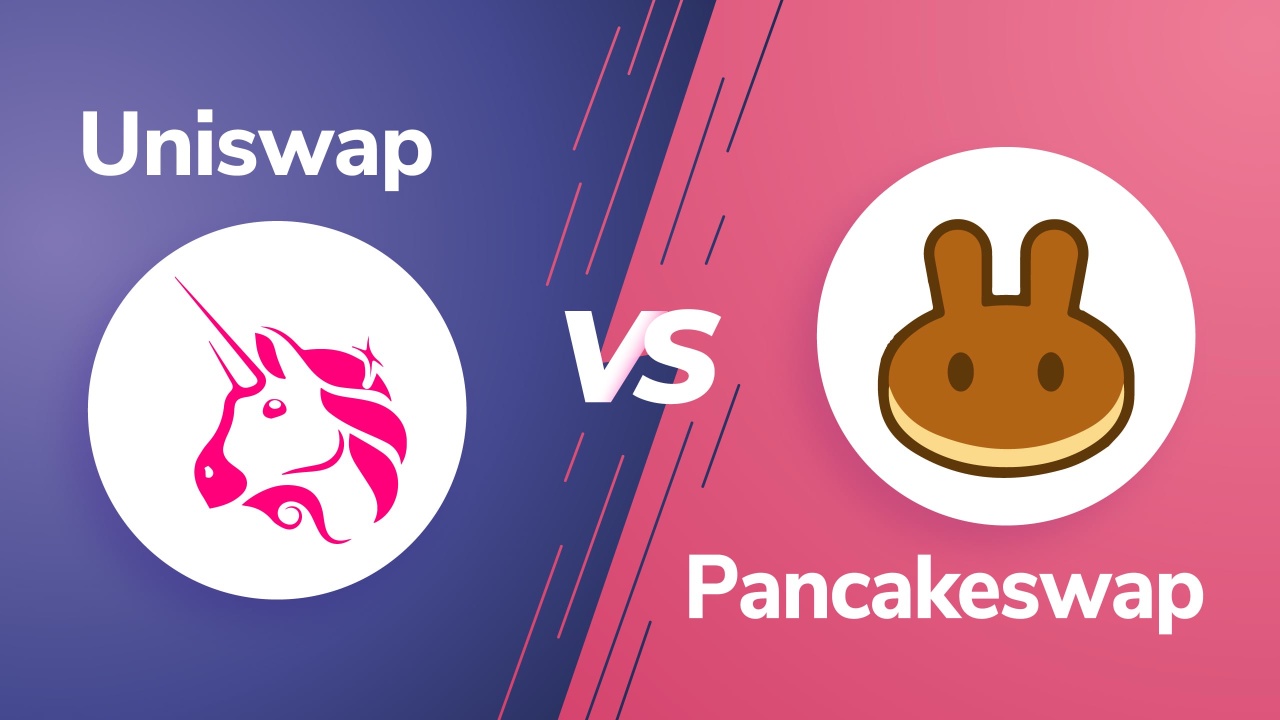Uniswap vs PancakeSwap: A Comparative Analysis of Decentralized Exchanges
 Decentralized exchanges (DEXs) have revolutionized the way users trade digital assets, offering a trustless and permissionless platform for swapping tokens. Among the myriad of DEXs available, Uniswap and PancakeSwap have emerged as two prominent players, each with its own unique features and strengths. In this article, we'll delve into a comparative analysis of Uniswap and PancakeSwap, exploring their key differences, similarities, and respective impacts on the decentralized finance (DeFi) ecosystem.
Decentralized exchanges (DEXs) have revolutionized the way users trade digital assets, offering a trustless and permissionless platform for swapping tokens. Among the myriad of DEXs available, Uniswap and PancakeSwap have emerged as two prominent players, each with its own unique features and strengths. In this article, we'll delve into a comparative analysis of Uniswap and PancakeSwap, exploring their key differences, similarities, and respective impacts on the decentralized finance (DeFi) ecosystem.
Background:
Uniswap, launched in November 2018, operates on the Ethereum blockchain and is one of the first and most well-known decentralized exchanges. It pioneered the concept of automated market makers (AMMs), allowing users to trade tokens directly from their wallets without the need for intermediaries.
PancakeSwap, on the other hand, was introduced in September 2020 and operates on the Binance Smart Chain (BSC). It gained popularity for its lower transaction fees and faster confirmation times compared to Ethereum-based DEXs, making it a favored choice among users seeking more cost-effective trading options.
Key Differences:
Blockchain Compatibility: Uniswap is built on the Ethereum blockchain, while PancakeSwap operates on the Binance Smart Chain. This fundamental difference in blockchain infrastructure influences various aspects of the platforms, including transaction fees, speed, and interoperability with other decentralized applications (dApps).
Transaction Fees and Speed: Ethereum's network congestion often results in high gas fees and slower transaction times on Uniswap, especially during periods of high demand. In contrast, PancakeSwap leverages BSC's lower fees and faster block times, offering users a more cost-effective and efficient trading experience.
Supported Tokens: While both Uniswap and PancakeSwap support a wide range of tokens, their respective ecosystems differ in terms of token availability and liquidity. Uniswap predominantly features Ethereum-based tokens, whereas PancakeSwap offers a broader selection of tokens, including those native to BSC and cross-chain assets.
User Interface and Experience: Both platforms prioritize user experience, with intuitive interfaces designed to facilitate seamless token swaps and liquidity provision. However, some users may prefer the interface of one platform over the other based on personal preferences and familiarity with the respective ecosystems.
Key Similarities:
Automated Market Makers (AMMs): Both Uniswap and PancakeSwap utilize AMM protocols to facilitate decentralized trading. This algorithmic approach to liquidity provision enables users to trade tokens directly against liquidity pools, eliminating the need for order books and centralized intermediaries.
Liquidity Provision: Users can participate in liquidity provision on both platforms by adding their tokens to liquidity pools in exchange for trading fees and other rewards. This mechanism enhances the liquidity and efficiency of the platforms while incentivizing users to contribute to the ecosystem.
Community Governance: Uniswap and PancakeSwap both feature governance mechanisms that allow token holders to participate in decision-making processes related to platform upgrades, fee structures, and other governance proposals. This decentralized governance model empowers the community to shape the direction and evolution of the platforms.
Conclusion:
In conclusion, Uniswap and PancakeSwap represent two leading decentralized exchanges that have significantly contributed to the growth and innovation of the DeFi ecosystem. While they share similarities in their underlying AMM mechanisms and commitment to decentralization, their differences in blockchain compatibility, transaction fees, and token availability cater to distinct user preferences and needs.
Ultimately, the choice between Uniswap and PancakeSwap depends on factors such as transaction cost, speed, token selection, and user experience. As the DeFi landscape continues to evolve, both platforms are likely to play integral roles in shaping the future of decentralized finance, offering users greater accessibility, liquidity, and financial sovereignty.






























